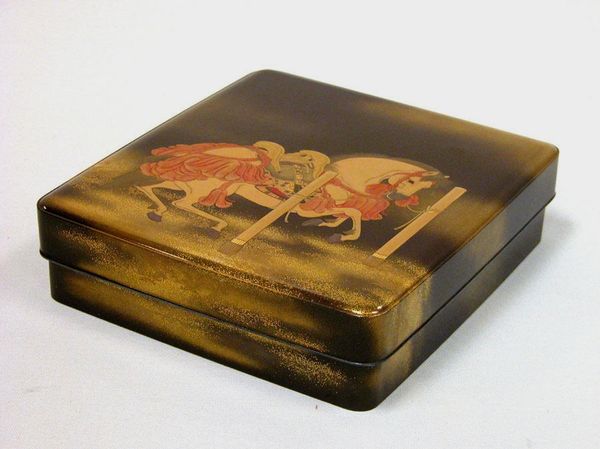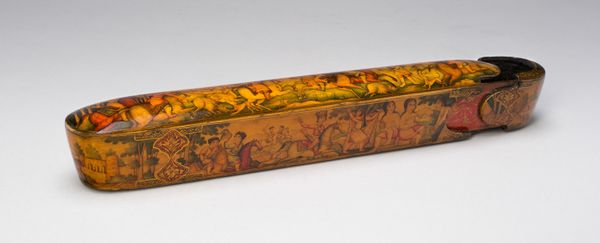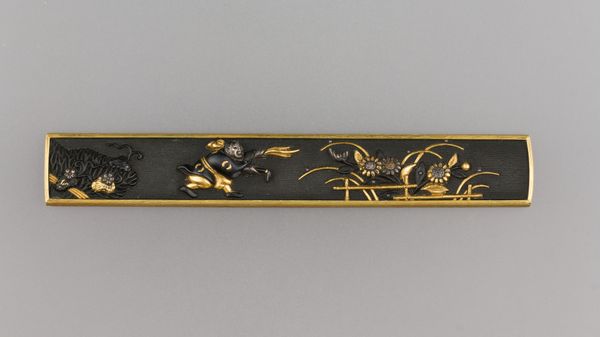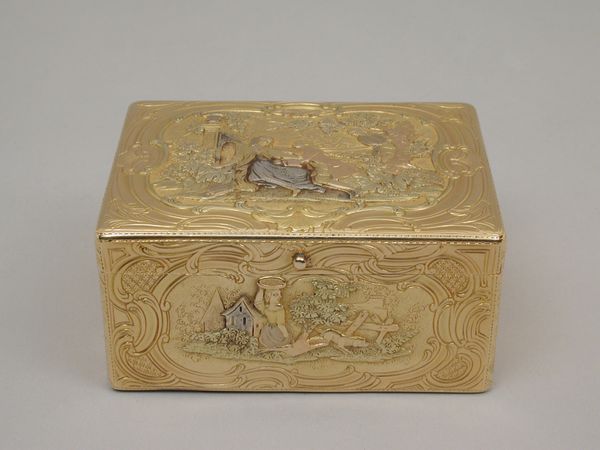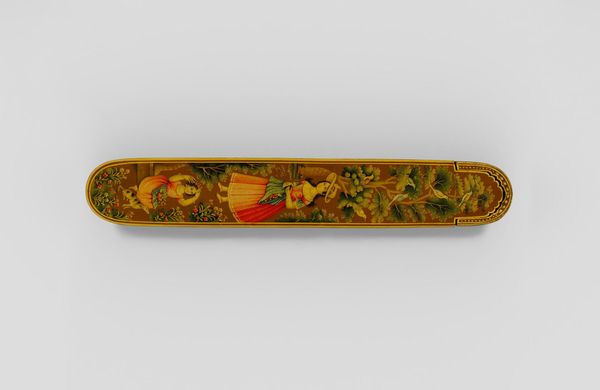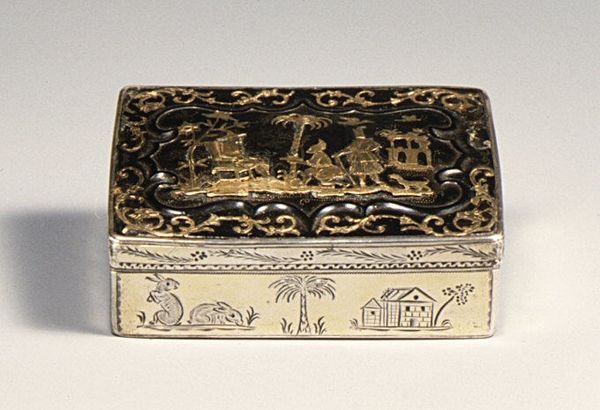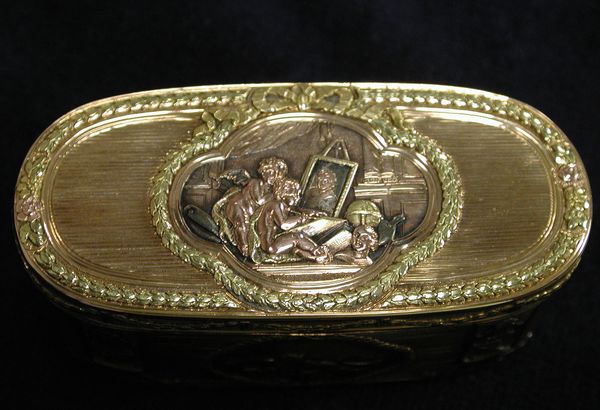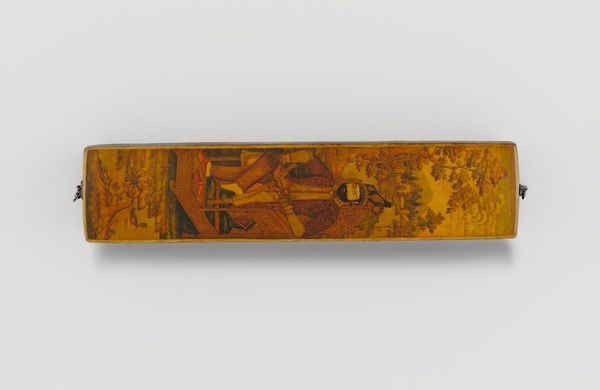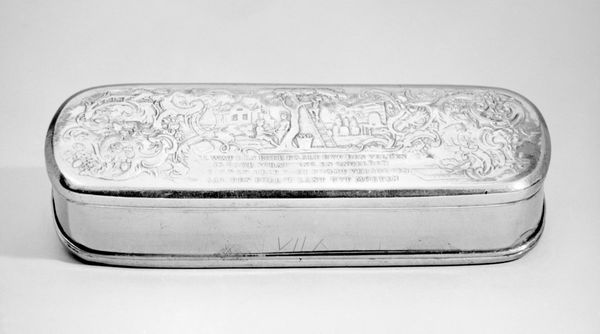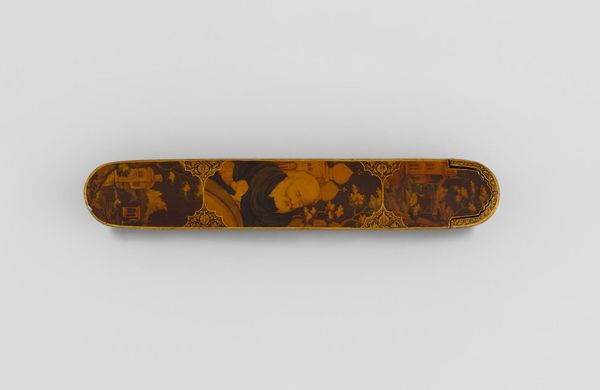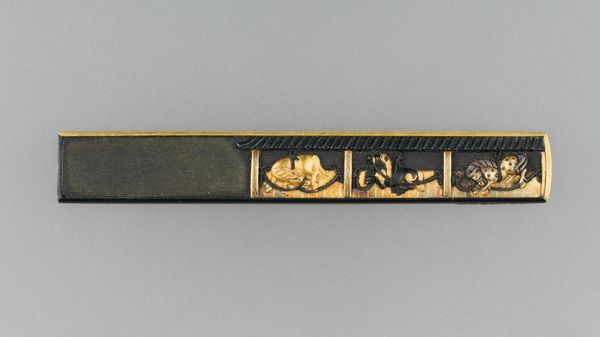
ornament, painting
#
ornament
#
painting
#
asian-art
#
landscape
#
islamic-art
#
decorative-art
#
miniature
Dimensions: 3 × 20 × 3 cm (1 3/16 × 7 7/8 × 1 3/16 in.)
Copyright: Public Domain
Curator: The pen box, or Qalamdan, from 19th century Qajar dynasty Persia at the Art Institute is exquisite, isn’t it? Editor: It is! The detailed paintings and ornamentation covering the entire box are striking. It almost feels like a miniature world contained within a practical object. How do you interpret this work in relation to its time? Curator: I see this piece as a complex intersection of power, identity, and artistic expression within the Qajar court. Who was this pen box created for, and what did it signify for them to possess such an item? Note the depictions of nature, like the domestic animals and foliage. Are these simply decorative, or do they symbolize something deeper about the relationship between humans, land, and power? Consider who would be literate and have the privilege to use a pen box like this? Editor: That makes me think about class and access. The fact that only certain people had the ability to write positions this pen box not just as a container for writing tools but as an object signifying high social standing. But where does the activism piece come in? Curator: The activism arises from questioning the status quo and the power dynamics represented in the artwork. By analyzing the imagery, craftsmanship, and context of the Qalamdan, we are also exploring who was excluded from this world of beauty and privilege. Who made this box, and what was their status? Were they free or enslaved persons? What roles did women play in the creation and consumption of objects like this? The very act of preservation and display can be a kind of activism that creates awareness. Editor: It’s amazing to see how a simple pen box can open up these important discussions about history, society, and even contemporary issues. It makes you realize objects hold much more than aesthetic value. Curator: Precisely! And by continuing this kind of inquiry, we challenge traditional art history and make space for a more inclusive and critical understanding.
Comments
No comments
Be the first to comment and join the conversation on the ultimate creative platform.
